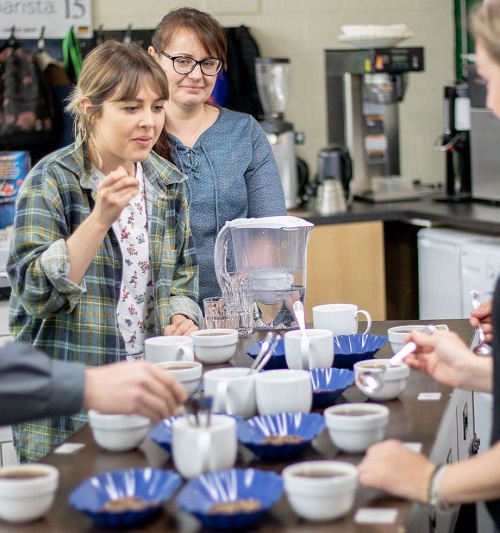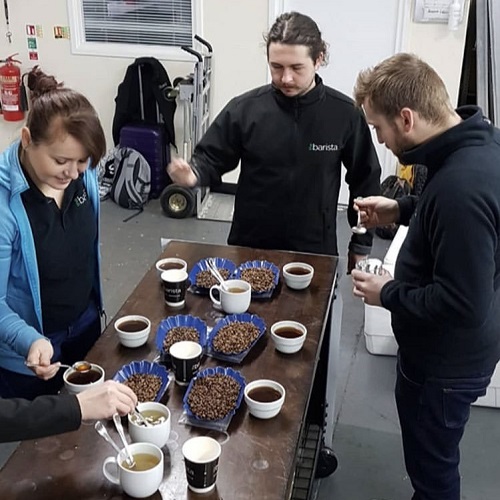Coffee cupping – what’s the deal?
You might have come across baristas or coffee enthusiasts talking about the importance of coffee cupping. Perhaps you’ve seen cafés or roasters offering coffee cupping classes or experiences.

But, what is a coffee cupping?
It might sound like a fancy name for pouring a brew, but a coffee cupping is actually a taste testing exercise. It’s a way of comparing the characteristics of different coffees, side by side. The coffees are brewed in the same way to offer a fair and level comparison.
Cupping is something that roasters and baristas do to fine tune their blends and get to grips with the subtle flavours and aromas of different coffees.
Why is it important for coffee professionals?
Anyone can hold a coffee cupping and it can be an enjoyable way to learn more about different coffees and find your favourites.
But for those working in the coffee industry, it’s an important exercise that helps you maintain the quality of your product. For coffee roasters, it’s how you design and test your blend. For baristas, a cupping helps understand different coffees in order to better market and serve them.
When creating a new blend, we need to pick the coffees that best meet our guidelines and match the tastes of our clientele. Cupping allows us to find the right combinations. It’s also important to eliminate coffees which may not be up to standard.
An example of this is the ‘potato defect’ which can affect coffee from Central and West Africa. This coffee carries a flavour similar to that of water from boiling potatoes due to a particular bacteria. The coffee is harmless, but not something we’d want to end up in a blend.
 How often is cupping carried out?
How often is cupping carried out?
At The Barista, we hold coffee cuppings several times a year. We change our blend twice a year, introducing new coffees seasonally in January and May, with cuppings each time.
We’ll also cup the blend for development a few times in between. This gives us the chance to maintain the quality of the flavour, getting people around the table to discuss improvements. We might adjust the roasting profile or development time, for instance, to further fine tune our process.
The cuppings are also a great chance for the whole team to get together to discuss and critique the coffees we serve. And they’re a learning opportunity for those serving the coffee who might not be directly involved in the roasting process.
We’ll occasionally combine a cupping with sensory training. These sessions help us distinguish subtle tasting notes, such as the differences in the types of acidity (lemon, line, and grapefruit) or chocolate (dark chocolate, molasses or cacao), for example.
You guessed it; yesterday was sensory training. ?
All the fruits, chocolates and nuts! Safe to say we all skipped dinner! ? pic.twitter.com/1UQnvDqP2o
— The Barista (@TheBaristaUK) February 12, 2019
Although it’s not essential for baristas to have this level of insight to serve exceptional coffees, it’s an important part of how we work. We’re a team of people who love what we do and we relish any opportunity for learning and experimentation. It helps us refine our practices and provide the best possible results for clients.
We’re on Twitter, Facebook, LinkedIn and Instagram, where you can follow us for plenty of coffee-related updates and pictures.
